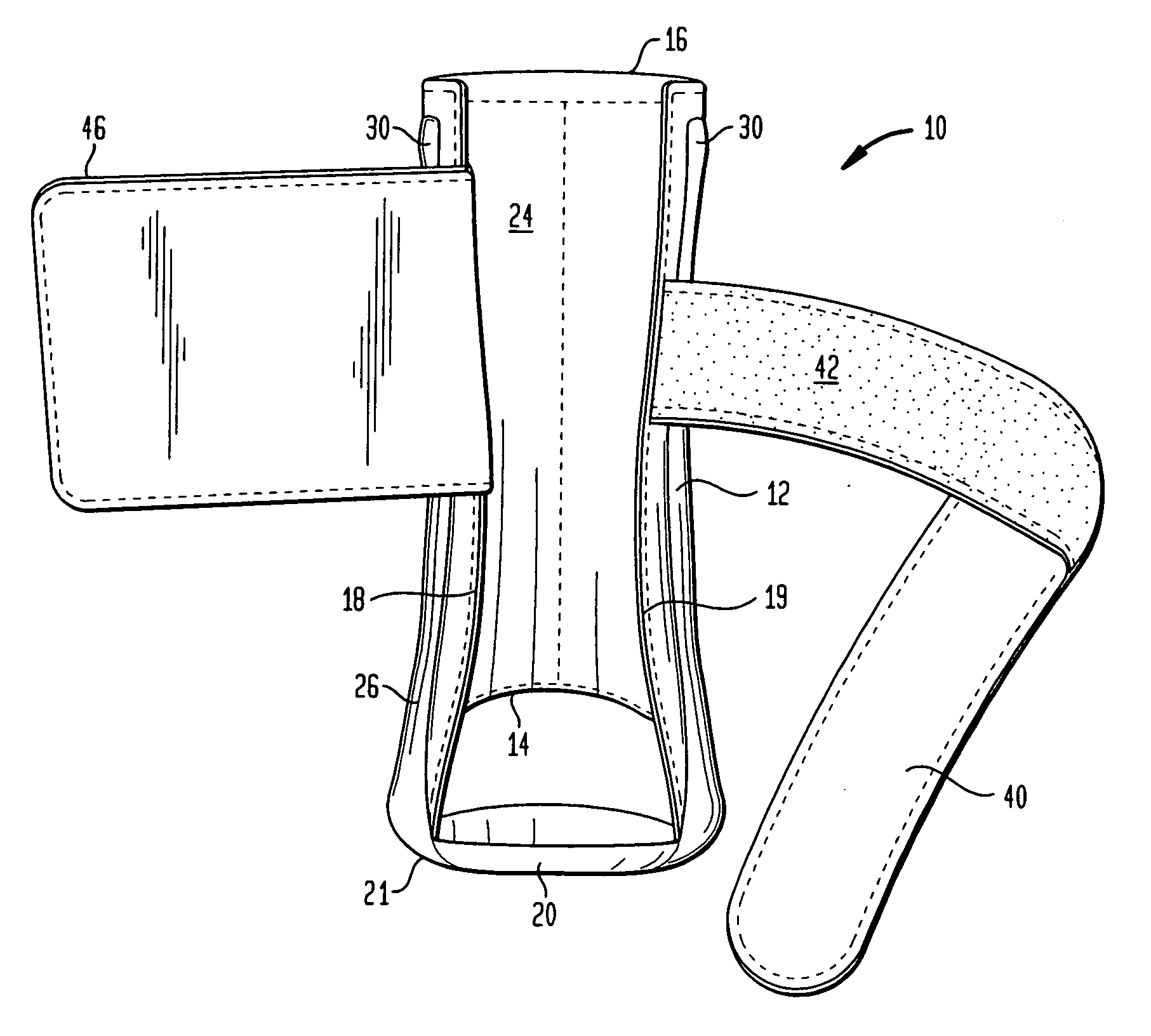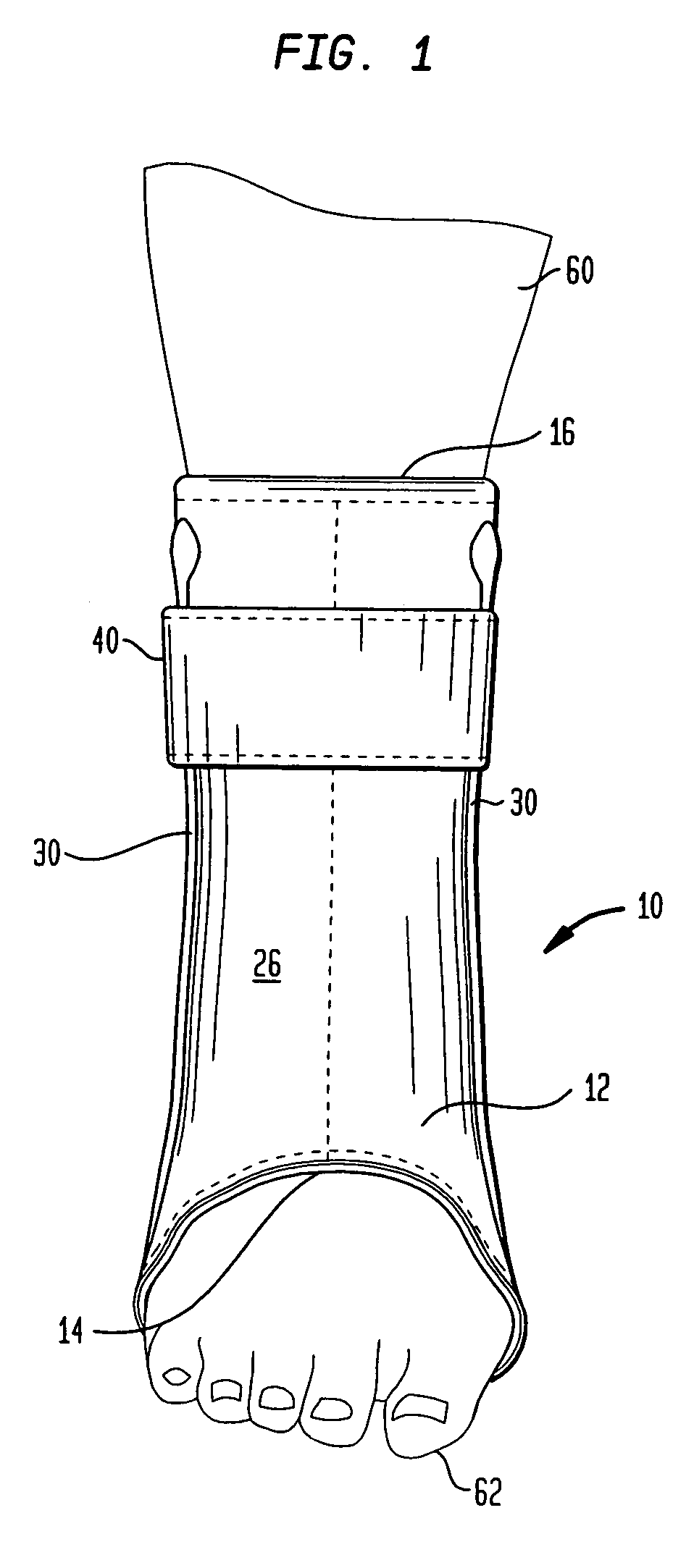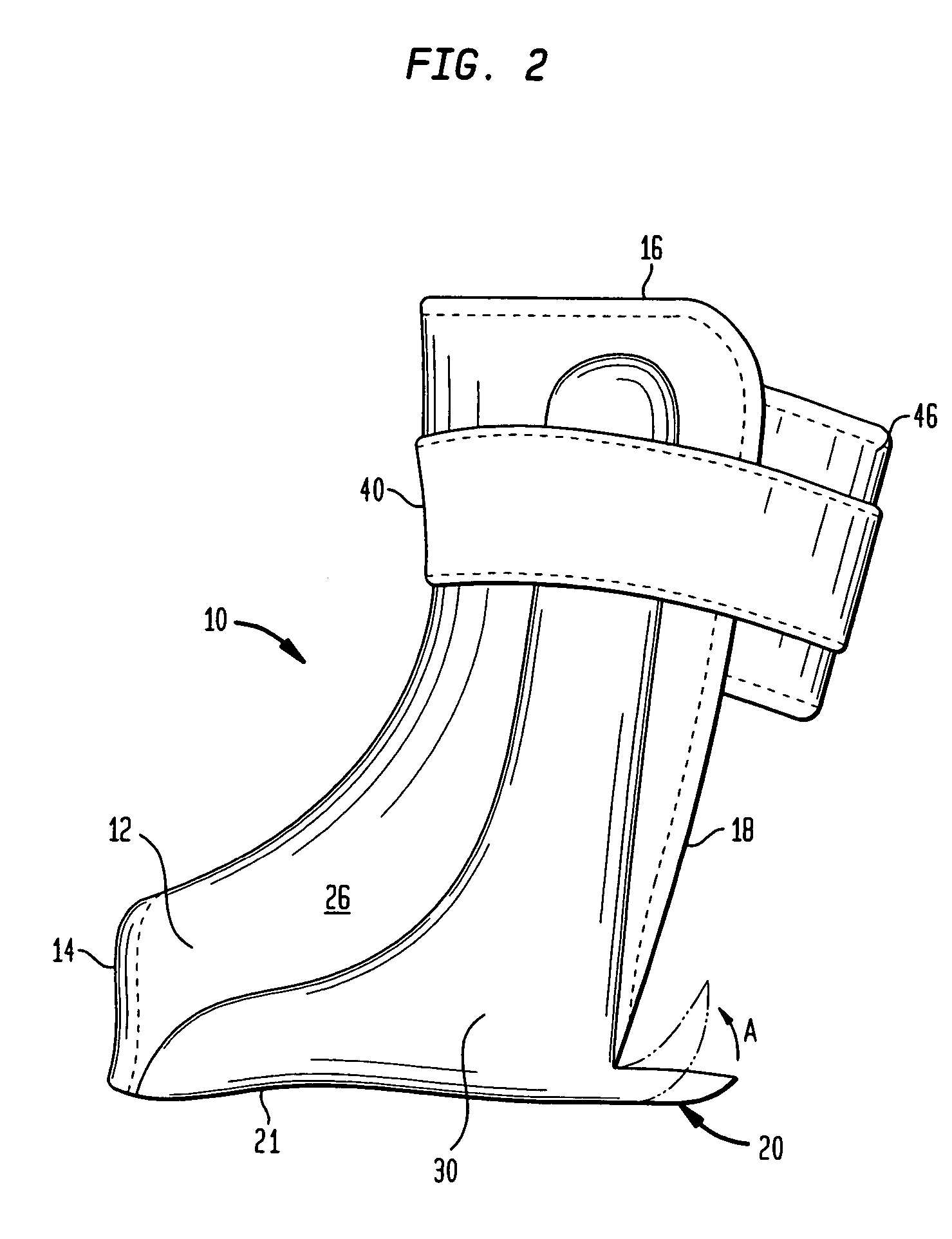Ankle brace
a technology for ankles and braces, applied in the field of ankle braces, can solve the problems of cumbersome and time-consuming devices, affecting proprioception, and difficult to wear with standard footwear, and achieve the effect of facilitating walking
- Summary
- Abstract
- Description
- Claims
- Application Information
AI Technical Summary
Benefits of technology
Problems solved by technology
Method used
Image
Examples
example
[0042] The ankle brace of the invention was tested on approximately 102 patients having the following conditions: 72 had posterior tibialis tendon dysfunction, 10 had Charcot ankles, 12 had Achilles injuries, and 8 had chronic ankle instability. The age range of the patients was 14 to 82 years with a mean age of 50. The patients were each fitted with a custom-molded ankle brace of the present invention. The patients wore the braces for approximately 12 hours per day. Patients were examined between 3 to 9 months (mean range 6 months), beginning from the time of first wearing the ankle brace of the present invention. The patients were asked questions about the status of their condition. All but two of the patients showed significant improvement in pain. Approximately 90% of the patients were successfully treated and did not require surgical intervention.
[0043] Referring to FIGS. 8-14, another embodiment of the ankle brace of the present invention, indicated generally at 110, is shown...
PUM
 Login to View More
Login to View More Abstract
Description
Claims
Application Information
 Login to View More
Login to View More - R&D
- Intellectual Property
- Life Sciences
- Materials
- Tech Scout
- Unparalleled Data Quality
- Higher Quality Content
- 60% Fewer Hallucinations
Browse by: Latest US Patents, China's latest patents, Technical Efficacy Thesaurus, Application Domain, Technology Topic, Popular Technical Reports.
© 2025 PatSnap. All rights reserved.Legal|Privacy policy|Modern Slavery Act Transparency Statement|Sitemap|About US| Contact US: help@patsnap.com



